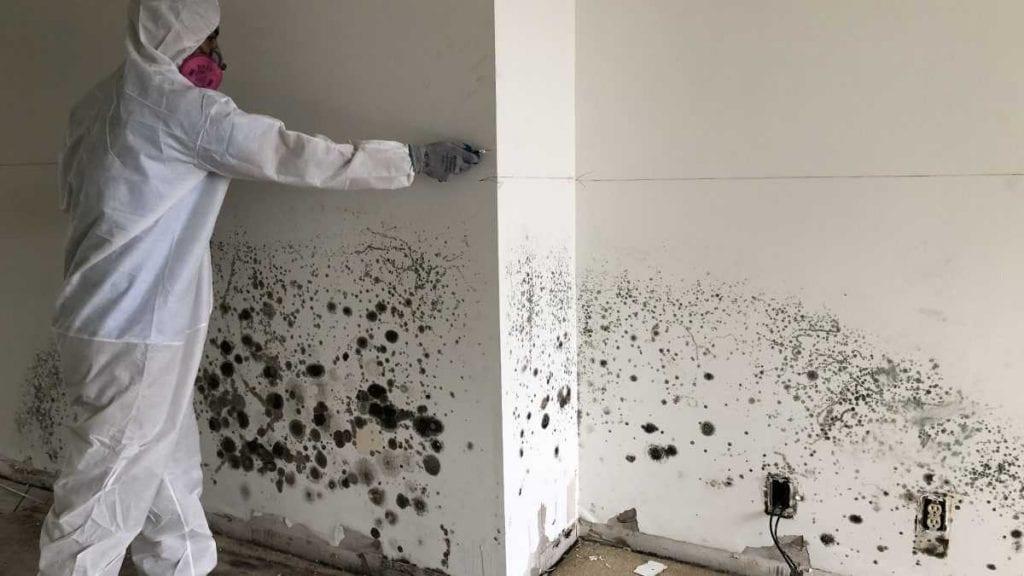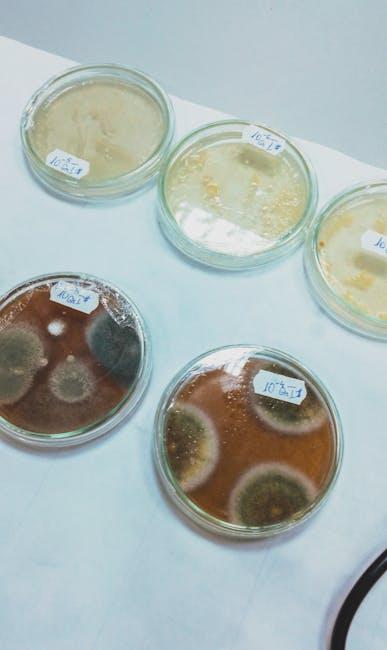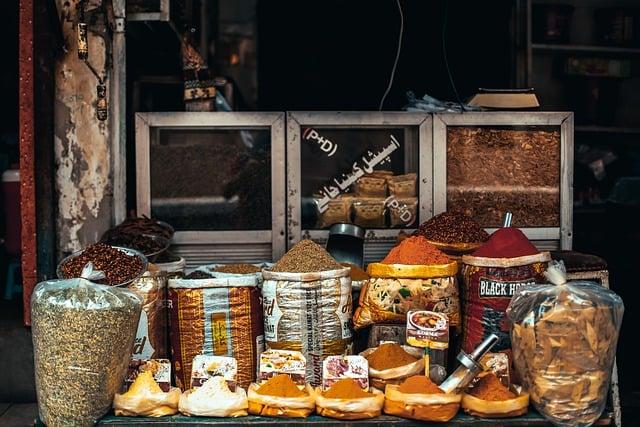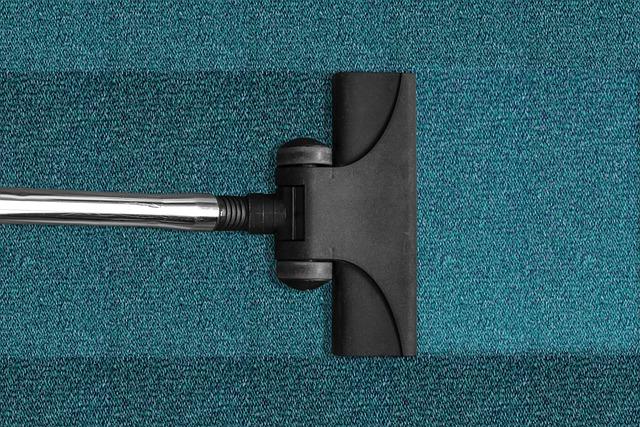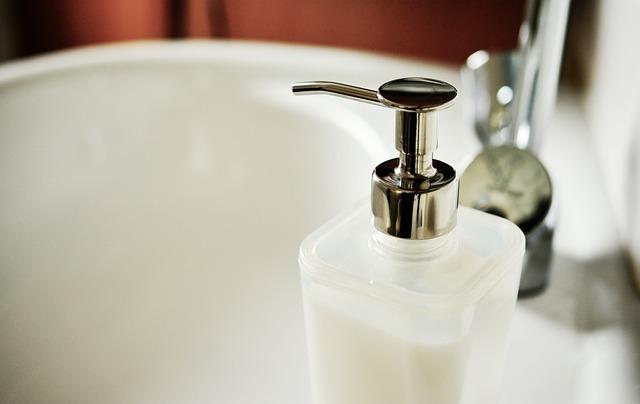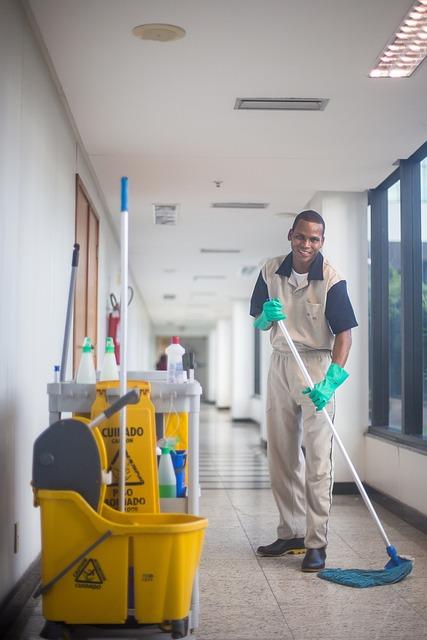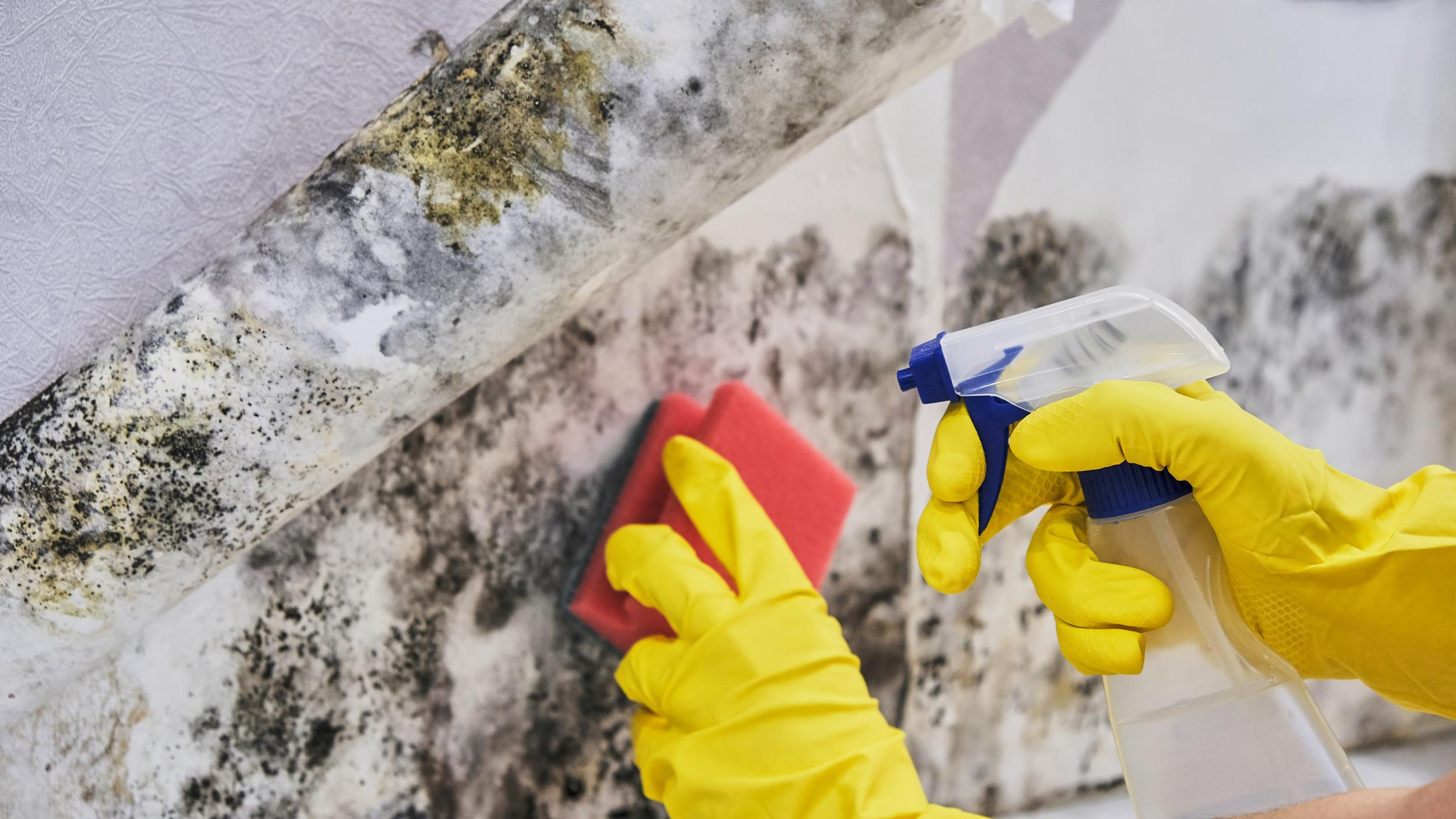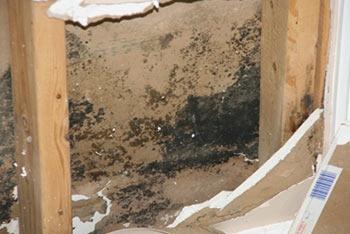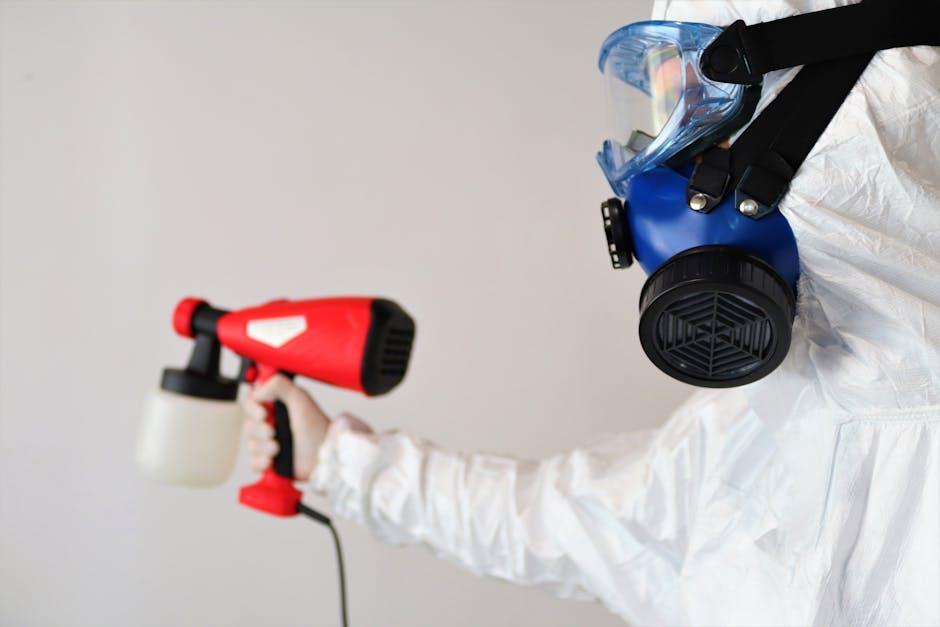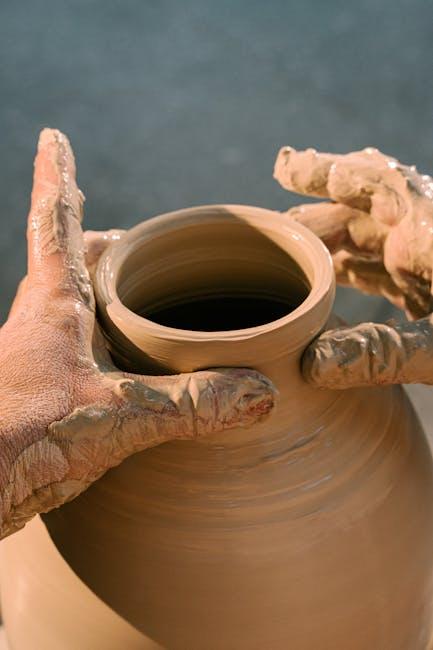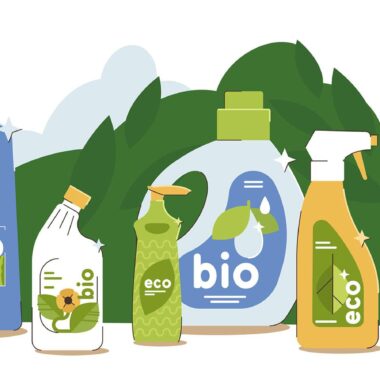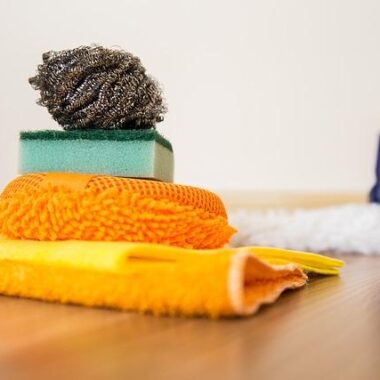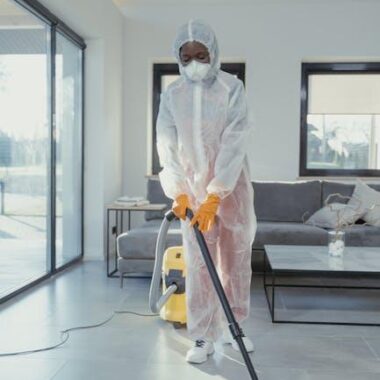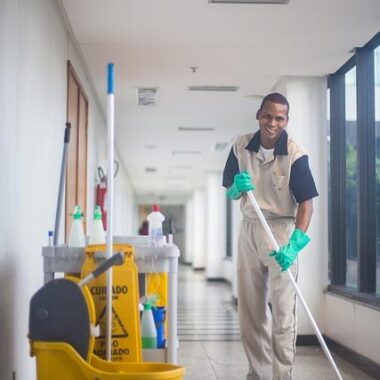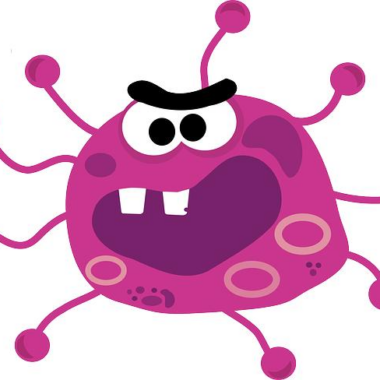Have you ever walked into your home only to be greeted by that musty smell or a patch of discolored wall? Yikes! Mold is not just an eyesore; it can also be a serious health risk. But don’t worry! There’s a silver lining. Instead of reaching for harsh chemicals that can do more harm than good, what if I told you there are natural cleaning products that can tackle mold effectively? You might be wondering, “Is that really possible?” Absolutely! In this article, we’re going to dive into some safe, eco-friendly ways to bid farewell to unwanted mold without putting your health or the environment at risk. So grab a cup of coffee, get comfy, and let’s get ready to reclaim your space—naturally!
Table of Contents
- How Mold Grows and Why It Matters to Your Home
- The Natural Ingredients That Pack a Punch Against Mold
- Step-by-Step Guide to Preparing Your Cleaning Solution
- Top Natural Cleaning Products You Can Easily Make at Home
- Proven Techniques for Applying Natural Mold Cleaners Safely
- Precautionary Measures to Take While Cleaning Mold
- How to Identify and Treat Hidden Mold in Your Space
- Tips for Preventing Mold Growth After Cleaning
- Real-Life Success Stories of Mold Cleanup with Natural Solutions
- Q&A
- Closing Remarks
How Mold Grows and Why It Matters to Your Home
Understanding how mold grows is essential for maintaining a healthy home environment. Mold thrives in damp, humid conditions, feeding on organic materials like wood, paper, and even dust. All it takes is a little moisture—a leaky roof, a broken pipe, or even high humidity levels—and mold can begin to spread. Did you know that mold spores can be airborne, lurking in your home’s air? This means they’re always a potential hazard, especially if you don’t take the necessary precautions.
The life cycle of mold is quite fascinating yet alarming. Mold spores, when exposed to the right conditions—think warmth, moisture, and a food source—can germinate within 24 to 48 hours. Before you know it, a small patch can grow into a larger colony, sometimes visible as spots or discoloration on walls, ceilings, or even your favorite furniture. Keeping an eye on areas prone to moisture, like bathrooms and basements, can help you tackle any growth before it gets out of hand.
Why should you care? Well, aside from being unsightly, mold can pose serious health risks. From respiratory issues to allergic reactions, exposure to mold isn’t something to take lightly. Even if you’re healthy, breathing in mold spores can lead to discomfort and potentially exacerbate existing health issues. This is why early detection and removal are vital to keeping your home safe and your loved ones healthy.
So, where should you look for mold? Here are some common hotspots to monitor:
- Bathrooms (especially around sinks and tubs)
- Basements and crawl spaces
- Behind appliances (like refrigerators and washing machines)
- Near windows and doors where condensation might collect
Taking preventive steps can make a world of difference. Utilize dehumidifiers to maintain optimal humidity levels in your home, ideally between 30-50%. Regularly inspect plumbing for leaks and replace any worn or damaged seals on windows and doors. If you have to tackle existing mold, opt for natural cleaning products like vinegar or baking soda—they’re effective and safe for most surfaces! Did you know that a 10% vinegar solution can effectively kill many types of mold?
Lastly, if you’re ever faced with extensive mold growth—or if someone in your household has a compromised immune system—consider contacting a professional. It might seem daunting at first, but taking these steps seriously not only protects your physical health but also prolongs the lifespan of your home and its fixtures. Remember, knowing where mold grows and staying vigilant about its prevention is key to ensuring a clean, safe living environment.
The Natural Ingredients That Pack a Punch Against Mold
Mold can be a pesky problem, but did you know that nature has equipped us with some serious tools to kick it to the curb? Many everyday ingredients can not only help combat mold, but they’re also safe for your home and family. Let’s dive into the natural wonders that can help keep your spaces mold-free!
1. Vinegar – This kitchen staple is more than just a salad dressing! The acetic acid in vinegar works wonders to kill a wide range of mold species. Just grab a spray bottle, dilute the vinegar with water, and spritz it on the affected areas. You don’t have to worry about harsh chemicals—just be ready for a bit of a tangy smell that fades quickly.
2. Baking Soda - Ever thought of baking soda as a mold fighter? This versatile powder not only deodorizes but can also tackle mold when mixed with water. Create a paste and scrub it onto moldy areas, or you can dissolve it in water and use a spray bottle for easy application. It’s like a spa day for your home!
3. Tea Tree Oil – A few drops of this essential oil can pack a serious punch against mold. Known for its antifungal properties, tea tree oil is potent yet safe. Blend a teaspoon with a cup of water in a spray bottle, shake it up, and mist away—just remember to avoid over-saturating surfaces.
4. Lemon Juice – Not just for flavoring your drink, lemon juice has natural antibacterial and antifungal properties that can help keep mold at bay. Apply it directly to moldy areas and let it sit for a few hours before wiping it away. The added bonus? You’ll be left with a fresh, citrus scent.
5. Hydrogen Peroxide – Don’t underestimate this common household item! Hydrogen peroxide is a powerful disinfectant that’s effective against mold and mildew. Spray it full strength onto moldy areas and allow it to sit for about 10 minutes before wiping it down. It’s an easy and effective way to maintain a healthy environment.
If you’re still not convinced about going the natural route, consider this: natural ingredients are better for the planet and for your health. So next time you spot that unwelcome mold, reach for these natural alternatives and watch that pesky growth fade away!
Step-by-Step Guide to Preparing Your Cleaning Solution
Making your own cleaning solution at home can be both fun and empowering. Plus, it’s a great way to banish mold safely. You likely already have some ingredients in your pantry! The first thing you’ll need is a base liquid, and white vinegar is a fantastic choice. Not only does it fight mold, but it also removes odors. Grab a spray bottle—it’ll be your best friend in this mold-fighting mission.
Next, let’s add some baking soda into the mix. It’s an excellent mold scrubber that doubles as a deodorizer. To really pack a punch, combine one cup of vinegar with half a cup of baking soda. This combo creates a slight fizz that helps lift away stubborn mold. Remember, it’s not just about what you use, but how you mix it up. Give your solution a good shake to ensure all the ingredients get friendly with each other.
To make your cleaning solution even more effective, consider adding a few drops of essential oils such as tea tree oil or lavender oil. Not only do they smell fantastic, but they also have natural antifungal properties. Just a teaspoon or two will do the trick! This way, you can enjoy a lovely aroma while tackling that unwelcome mold.
Now, if you’re looking to tackle larger areas or just prefer a different method, you might want to create a more substantial batch. Here’s a simple table to guide you with measurements:
| Ingredient | Measurement |
|---|---|
| White Vinegar | 1 cup |
| Baking Soda | ½ cup |
| Water | 2 cups |
| Essential Oils | 1 tsp |
Once you have everything mixed up, it’s time to decant your solution into a clean spray bottle. Always label your bottle, so you know exactly what’s inside. You don’t want to mix it up with other cleaning products! When you’re ready to tackle the mold, shake the bottle gently before use to ensure the ingredients are properly mixed.
When applying your solution, spray directly onto the moldy area and let it sit for at least 10 minutes. This dwell time allows the solution to penetrate the mold effectively. Afterward, grab a cloth or a scrub brush and start scrubbing away gently. In no time, you’ll see that pesky mold disappearing, and you can feel great knowing you did it naturally!
Top Natural Cleaning Products You Can Easily Make at Home
Ready to tackle mold and grime without harsh chemicals? You’d be surprised how effective some homemade cleaning solutions can be. Let’s dive into a few easy mixtures that can help you reclaim your space from mold while being kind to the environment. These DIY cleaning products are not just eco-friendly but also quick to whip up!
Vinegar and Water Solution
When it comes to fighting mold, vinegar is your best friend. It has antifungal properties and is safe to use around pets and kids. Here’s how to create your own:
- What You Need: 1 part white vinegar, 1 part water.
- Instructions: Mix in a spray bottle, shake it up, and spray directly onto the moldy area. Let it sit for about an hour before wiping it away.
Baking Soda and Water Paste
Baking soda is great for scrubbing and deodorizing while also combating mold growth. Here’s a simple recipe:
- What You Need: 1/2 cup baking soda, a few tablespoons of water.
- Instructions: Mix until you form a thick paste. Apply it to the moldy spots, let it dry, and then scrub off using a damp cloth.
Tea Tree Oil Spray
If you want a solution that smells great while keeping the mold at bay, tea tree oil is a marvelous option. This natural antifungal is incredibly potent! Here’s how you can make a handy spray:
- What You Need: 1 tablespoon of tea tree oil, 1 cup of water.
- Instructions: Combine in a spray bottle, shake, and spray onto the affected areas. No rinse necessary!
Hydrogen Peroxide Cleaner
Another powerful mold-buster is hydrogen peroxide. Plus, it’s fairly inexpensive and easy to find. Just remember, it can be a bit more abrasive, so test it in an inconspicuous spot first!
- What You Need: 1 cup of 3% hydrogen peroxide.
- Instructions: Pour into a spray bottle and apply it directly to moldy surfaces. Allow it to sit for 10-15 minutes before wiping clean.
Lemon Juice and Salt Scrub
For a refreshing alternative, try a lemon juice and salt mix! The acidity of lemon juice helps cut through grime while the salt acts as a gentle scrubber.
- What You Need: 1/2 cup lemon juice, 1/4 cup salt.
- Instructions: Mix the two until you get a paste. Apply it to moldy areas, scrub with a brush, and rinse with water.
Proven Techniques for Applying Natural Mold Cleaners Safely
Mold cleaning can feel like a tough battle, right? But guess what? With natural cleaners, you’re not just fighting mold, you’re also protecting your family and the environment. Many natural ingredients are fantastic at tackling mold without the harsh chemicals. Let’s explore how to use them safely!
Start with the Basics: Before diving into the cleaning process, it’s crucial to have the right tools. Gather the following supplies:
- A spray bottle
- White vinegar
- Baking soda
- Water
- Essential oils (like tea tree or lavender)
- Soft scrub brushes or sponges
One of the most effective natural mold cleaners is white vinegar. This powerhouse ingredient not only kills about 82% of mold species but also acts as a deodorizer. Mix equal parts vinegar and water in a spray bottle and apply it directly onto the affected areas. Let it sit for about an hour before scrubbing with a brush. This gives the vinegar time to work its magic without releasing any toxic fumes.
Baking Soda to the Rescue: After using vinegar, you can tackle any remaining stains or odors with baking soda. This wonder ingredient is incredibly safe and doesn’t just eliminate mold; it also absorbs excess moisture. Simply mix a tablespoon of baking soda with a cup of water to create a paste. Apply it to the moldy area, scrub, and rinse. Voila! You’ve got a mold-free surface and a fresh scent.
Essential Oils for Extra Punch: Want to add an aromatic touch while cleaning? Essential oils like tea tree oil not only smell heavenly but also pack a powerful punch against mold. Just mix a teaspoon of tea tree oil with a cup of water in a spray bottle. Spray it on the mold, and don’t wipe it off! Let it dry naturally. This ensures that the antifungal properties can continue working even after you’ve left the area.
Safety First: While using these natural techniques, it’s essential to think about your safety. Ensure you’re wearing gloves and a mask, especially if the mold is extensive. Open windows to ventilate the space—fresh air is your best friend! If you’re tackling a larger mold issue, consider checking in with a professional for guidance to make sure you’re handling it properly.
Precautionary Measures to Take While Cleaning Mold
When tackling mold at home, safety should always be your top priority. Before you dive into cleaning, make sure to gather all the necessary supplies. It’s like preparing for a mini adventure! Equip yourself with protective gloves, goggles, and a mask to shield yourself from mold spores that could irritate your respiratory system. After all, cleaning should leave you feeling fresh, not stuffy.
You’ll want to ensure you’re working in a well-ventilated area. Open up those windows, turn on a fan, or find a way to get some fresh air circulating. It’s kind of like giving your home a breath of fresh air while you tackle those pesky mold patches. Not only will it help keep the space airy, but it also minimizes the concentration of mold spores in the air, making your task much safer.
Consider the areas you’re cleaning too. Are there any surfaces that are particularly prone to mold because of excess moisture, like bathrooms or kitchens? If so, it’s wise to focus on those areas first. When addressing mold, think of yourself as a detective, lingering in the “crime scene” longer to uncover all hidden culprits. Missing even a small patch can lead to a comeback, so ensure a thorough inspection and cleaning.
Don’t forget to test any natural cleaning products you plan to use on a small, inconspicuous area first. Even natural cleaners can sometimes react unexpectedly with certain surfaces. It’s a bit like tasting your food before serving—it can prevent any surprises like discoloration or damage to the surface.
If the mold covers a large area, it might be wise to reconsider tackling it solo. Sometimes it’s better to call in professionals who know their stuff, especially if mold is deeply embedded or you have respiratory issues. Remember, asking for help is not a sign of weakness; it’s simply being smart about your safety!
Lastly, once you’ve done the hard work of cleaning, make sure to keep the area dry and well-maintained. Regularly check those spots where mold likes to hang out, and keep humidity levels in check. Think of it as giving your home a little extra love to prevent future mold scenarios. Your space will thank you!
How to Identify and Treat Hidden Mold in Your Space
Finding mold in your home can feel a bit like uncovering a buried treasure—only, this isn’t the good kind! Hidden mold often lurks in dark, damp places, making detection tricky. It might be under your sink, within walls, or even in your attic. So, how do we spot these sneaky spores? Start by keeping a keen eye on any areas prone to moisture. If you notice a musty smell, stains on walls or ceiling tiles, or condensation in unusual places, it’s time for a deeper investigation.
Once you’ve identified potential problem areas, don’t hesitate to get hands-on (well, protected hands, that is!). Use an old-fashioned flashlight to check for dark spots or fuzzy growth on surfaces, especially in bathrooms, kitchens, or around windows. You can also look for discoloration in paint or wallpaper. A thorough check can be just as satisfying as finding that elusive missing sock in the laundry pile!
If you suspect mold but can’t see it, consider using a mold testing kit. These kits can be relatively affordable and straightforward to use. Just swab the suspected area and send it off to a lab. Not only will this confirm your suspicion, but it’ll give you a better understanding of what type of mold you’re dealing with.
Once identified, treating mold is essential for a healthy environment. Here’s where those natural cleaning products come in! Mix equal parts of water and white vinegar in a spray bottle; this combo is harsh on mold but gentle on the environment. Spray it on the affected area, let it sit for about an hour, and then wipe it down. For tougher spots, a paste of baking soda and water can work wonders. Just apply, scrub, and rinse!
For more severity, you might need to take things up a notch with a hydrogen peroxide solution. Mix it in a spray bottle (3% concentration is usually safe) and treat the area. Just remember: always wear gloves and a mask to protect yourself from spores while cleaning! If the mold covers a large area (greater than 10 square feet), it could be a job for the pros.
once you’ve tackled the visible mold, it’s critical to address the source of moisture to prevent it from coming back. Dehumidifiers and proper ventilation can be game-changers. You’d be surprised how much of a difference they can make. Implementing these strategies will keep your space mold-free and fresh, ensuring a healthier home for you and your family.
Tips for Preventing Mold Growth After Cleaning
After successfully cleaning up mold, it’s crucial to take steps to prevent it from returning. Mold thrives in damp, humid environments, so managing moisture levels is the first line of defense. Here are some smart strategies to keep that mold at bay:
- Keep It Dry: Ensure that areas prone to moisture, like bathrooms and kitchens, are well-ventilated. Consider using exhaust fans or opening windows after cooking or showering.
- Monitor Humidity: Invest in a hygrometer to keep tabs on indoor humidity levels. Aim to maintain levels between 30-50%. If it gets too high, a dehumidifier can be your best friend.
- Seal and Insulate: Check for any leaks in your plumbing or roof. Sealing these leaks and insulating walls and windows can significantly reduce moisture ingress.
Another effective method is to use mold-resistant products during your cleaning and home maintenance. When repainting walls or treating surfaces, look for mold-resistant paint and materials. This extra layer of protection can work wonders, making it harder for mold to take hold.
Don’t forget about regular maintenance! Schedule periodic checks in problem areas. A quick inspection can help you catch any signs of moisture before they escalate into bigger problems. It’s all about being proactive rather than reactive.
Also, remember to keep your living spaces clean and uncluttered. Dust and debris can trap moisture, making it easier for mold to thrive. Incorporating a regular cleaning routine can go a long way in protecting your home.
Lastly, consider using natural remedies as precautionary measures. Vinegar and baking soda are not only great for cleaning but can also help deter mold. Spraying surfaces with a vinegar solution after cleaning can create an environment that discourages mold growth.
Real-Life Success Stories of Mold Cleanup with Natural Solutions
Let’s dive into some inspiring stories of folks who faced the common nightmare of mold and found relief through natural cleaning solutions. Imagine being that homeowner who discovers mold creeping up in the corners of your bathroom. Rather than resorting to harsh chemicals, many have turned to everyday items they likely already had in their cupboards.
Take Sarah, for example. After a particularly humid summer, she noticed dark spots starting to form on her shower tiles. Instead of panicking, she grabbed a bottle of vinegar and some baking soda. By mixing these two staples, she created an effective paste that not only tackled the mold but also left her bathroom smelling fresh. The best part? She didn’t have to worry about harmful fumes or chemicals potentially harming her kids or pets!
Then there’s Tom, a dedicated DIYer who found mold in his basement. With a little research, he discovered that hydrogen peroxide is a powerful mold fighter. He mixed it with water in a spray bottle and applied it directly to the affected area. After letting it sit, he scrubbed away the mold and was thrilled to see the results. No bleach, no harsh chemicals—just a simple solution that worked wonders!
And let’s not forget about Anna, a savvy urban gardener who stumbled upon an unexpected remedy—tea tree oil. After discovering mold on her beautiful indoor plants, she mixed a few drops of this essential oil with water in a spray bottle. Not only did it kill the mold, but it also served as a natural repellent for future growth. She felt great knowing her home environment was safe for her beloved plants and family alike.
| Name | Mold Removal Method | Results |
|---|---|---|
| Sarah | Vinegar & Baking Soda | Bathroom fresh and mold-free! |
| Tom | Hydrogen Peroxide | Recaptured his basement space! |
| Anna | Tea Tree Oil | Healthy plants, happy home! |
These success stories highlight how we can overcome challenges with a touch of creativity and a few natural ingredients. Using things like soap, vinegar, or essential oils, anyone can embark on their mold cleanup journey without breaking the bank or compromising safety. It’s about becoming empowered and finding solutions that are not only effective but also eco-friendly!
So, next time you encounter that pesky mold, remember the power of nature and the success stories of people just like you. Armed with a few simple ingredients, you too can reclaim your space and breathe easier, all while embracing healthier, chemical-free living!
Q&A
Q&A for “How to Safely Get Rid of Mold Using Natural Cleaning Products”
Q: Why should I use natural cleaning products to get rid of mold?
A: Great question! Natural cleaning products are not only safer for your health but also less harmful to the environment. They avoid harsh chemicals that can irritate your skin or respiratory system. Plus, they often smell much more pleasant! Think of it like choosing a soothing herbal tea instead of a bitter medicine – your body will thank you!
Q: What are some effective natural cleaning products for mold removal?
A: You’ve got some fantastic options! Vinegar is a superstar here; its acidity helps kill about 82% of mold species. Baking soda is another one, as it’s a natural disinfectant and deodorizer. If you’re up for it, tea tree oil is a powerful antifungal too, though it can be a bit more pricey. It’s like having a toolbox of nature’s best cleaners!
Q: How do I use these natural products to remove mold?
A: Simple! For vinegar, just pour it into a spray bottle, spray it directly on the moldy area, and let it sit for at least an hour before wiping it off. For baking soda, mix a quarter tablespoon with water to create a paste, apply it, let it dry, and scrub it away once it hardens. It’s like a fun DIY project you can do over the weekend!
Q: Is it safe to mix these natural cleaning products?
A: Absolutely! Mixing vinegar and baking soda actually creates a fizzing action that can help lift mold off surfaces. Just remember, after the fizzing stops, it’s always a good idea to wipe the area clean to remove any residue. Think of it as giving your home a refreshing little spa day!
Q: Can I prevent mold from coming back after I clean it?
A: You bet! Keep your home as dry as possible. Use a dehumidifier if necessary, fix any leaks, and ensure good ventilation – especially in those humid areas like bathrooms and kitchens. You wouldn’t let weeds take over your garden, right? Mold is like weeds that need a little attention to keep them at bay.
Q: What should I do if the mold is really bad?
A: If you’re facing a large mold infestation, it’s a good idea to call in the professionals. They have the right tools and training to handle the situation safely. It’s like calling in a gardener when the weeds have gotten out of hand – sometimes, you just need a helping hand.
Q: Can I use essential oils in my mold-fighting routine?
A: Definitely! Essential oils like eucalyptus or lavender not only help to prevent mold but can also leave your space smelling heavenly. Just add a few drops to your natural cleaning solution for an aromatic boost. It’s like adding a dash of seasoning to your favorite recipe!
Final Thought: If you’re ready to tackle that mold and embrace natural solutions, grab your supplies and let’s get cleaning! Your home will feel fresh and inviting in no time! What are you waiting for? Let’s make that mold a thing of the past!
Closing Remarks
And there you have it—your go-to guide on tackling mold without resorting to harsh chemicals! By sticking to natural cleaning products, you’re not just giving your home a fresh start; you’re also creating a healthier living environment for you and your loved ones.
Think about how empowering it feels to take care of your space using methods that align with your values—cleaning doesn’t have to involve toxic substances! So, the next time you spot those stubborn patches, remember that with a little vinegar, baking soda, or tea tree oil, you’ve got effective allies on your side.
If you found this guide helpful, why not share it with friends or family? They’ll appreciate the tips, and you can all breathe easier knowing you’re keeping your spaces fresh and healthy.
Got any other natural cleaning hacks? We’d love to hear them! Drop your thoughts in the comments. And remember, your home is your sanctuary—let’s keep it that way, naturally! 🌿✨

